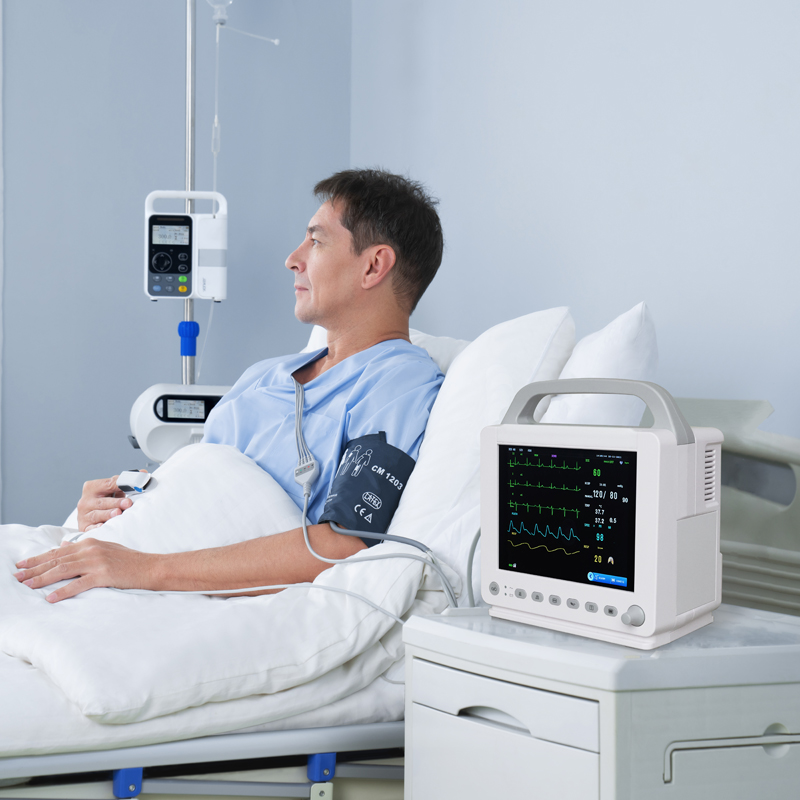In the fast-paced world of modern medicine, technology plays a pivotal role in patient care. Among the many medical devices in a hospital, patient monitors are often overlooked—yet they are the silent guardians that keep a watchful eye on patients' vital signs 24/7. These devices are not just for critical care units anymore. They have found their way into general wards, ambulances, and even homes. This article explores what patient monitors are, how they work, and why they are essential in both hospital and home settings.
What Is a Patient Monitor?
A patient monitor is a medical device that continuously measures and displays physiological data from a patient. The primary purpose is to track vital signs such as:
-
Heart rate (HR)
-
Electrocardiogram (ECG)
-
Oxygen saturation (SpO2)
-
Respiratory rate (RR)
-
Non-invasive or invasive blood pressure (NIBP/IBP)
-
Body temperature
Some advanced models also monitor CO2 levels, cardiac output, and other parameters depending on the clinical need. These monitors provide real-time data that help clinicians make informed decisions quickly.
Types of Patient Monitors
Depending on the use case, patient monitors are classified into several types:
1. Bedside Monitors
These are commonly found in ICUs and emergency rooms. They are mounted near the patient and provide continuous, multiparameter monitoring. They usually connect to a central station.
2. Portable or Transport Monitors
Used for moving patients between departments or in ambulances. They are lightweight and battery-operated but still provide comprehensive monitoring.
3. Wearable Monitors
These are designed for long-term monitoring without restricting patient movement. Common in post-surgery or home care.
4. Central Monitoring Systems
These aggregate data from multiple bedside monitors, allowing nurses or doctors to watch over several patients simultaneously from one station.
Key Features and Technologies
Multiparameter Monitoring
Modern monitors can track multiple parameters at once, allowing a complete overview of a patient’s condition.
Alarm Systems
If a vital sign goes outside the normal range, the monitor sets off an audible and visual alarm. This ensures rapid response in emergencies.
Data Storage and Trend Analysis
Monitors can store patient data over hours or days, allowing healthcare providers to track trends and detect gradual changes.
Connectivity
With advancements in digital health, many monitors now connect wirelessly to hospital networks or cloud-based systems for remote patient monitoring and integration with Electronic Health Records (EHR).
Applications Across Healthcare Settings
Intensive Care Units (ICU)
Here, every second counts. High-acuity patients require constant monitoring of multiple vital signs to detect sudden changes.
General Hospital Wards
Even stable patients benefit from basic monitoring to detect early signs of deterioration.
Emergency and Ambulance Services
During transport, portable monitors ensure that paramedics can react to changes in the patient's condition.
Home Healthcare
With the rise in chronic diseases and aging populations, remote monitoring devices are increasingly used at home to reduce hospital readmissions.
Benefits of Patient Monitoring
-
Early detection of complications
-
Informed decision-making
-
Improved patient safety
-
Enhanced workflow efficiency
Challenges and Considerations
-
Alarm fatigue from frequent false alarms
-
Accuracy issues due to movement or sensor placement
-
Cybersecurity risks in connected systems
-
Regular maintenance and calibration requirements
Future Trends
AI and Predictive Analytics
Next-generation monitors will use artificial intelligence to predict events like cardiac arrest before they happen.
Miniaturization and Wearables
Smaller, wearable monitors will allow patients to move freely without interrupting data collection.
Remote and Home Monitoring
As telehealth expands, more patients will be monitored from home, reducing the burden on hospitals.
Integration with Smart Devices
Imagine your patient monitor sending alerts to a smartphone or smartwatch in real time—this is already becoming a reality.
Why YONKER Patient Monitors?
YONKER provides a range of multiparameter patient monitors tailored for various clinical environments—from compact models for outpatient settings to high-end monitors designed for ICUs. With features such as large touchscreen displays, intelligent alarms, long battery life, and compatibility with EMR systems, YONKER's monitors are built for reliability and ease of use.

At Yonkermed, we pride ourselves on providing the best customer service. If there is a specific topic that you are interested in, would like to learn more about, or read about, please feel free to contact us!
If you would like to know the author, please click here
If you would like to contact us, please click here
Sincerely,
The Yonkermed Team
infoyonkermed@yonker.cn
Post time: May-28-2025

